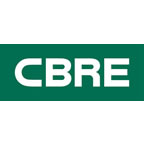Office Market Posts Strongest Vacancy Decline in Eight Years
Los Angeles, 2014-10-9— /EPR Retail News/ — The U.S. commercial real estate market strengthened strongly across all property types in the third quarter of 2014 (Q3 2014), with the office sector delivering its best performance in eight years, according to the latest analysis from CBRE Group, Inc.
-
The office vacancy rate declined by 40 basis points (bps) from the previous quarter to reach 14.1% in Q3 2014 – the sharpest drop since Q2 2006.
-
In Q3 2014, national industrial availability1 declined 20 bps from the previous quarter to 10.6%.
-
Retail availability fell to 11.5%, a 20 bps decrease for the quarter.
“The real estate recovery clearly gained in strength in the third quarter as all property types saw notably improved demand trends,” said Jon Southard, Managing Director of CBRE’s Econometric Advisors group. “Especially important, office tenants showed greater confidence in expanding their footprint and finally appear to be shaking off the lingering effects of the recession.”
Office Market
With a 40 bps decrease for Q3 2014, the office market has now seen nine consecutive quarters of lower or flat vacancy. After underperforming the suburbs for most of the recovery, downtown submarkets outperformed the suburbs this quarter, declining by 50 bps to 11.3% while the suburban vacancy rate fell by 20 bps to 15.7%.
The recovery continues to broaden across markets – with lower vacancy evident in 44 of 63 markets nationally – as those with significant high-tech exposure continuing to be among the best performers. Seattle and San Francisco posted vacancy declines of 70 bps each while the vacancy rate in San Jose fell by more than 120 bps. The rapid recovery continued in markets across California, Nevada, Florida and Arizona (CANVFLAZ), whose economies were most severely affected by the housing crisis but are now recovering strongly. These include Miami
(-60 bps), West Palm Beach (-100 bps), San Diego (-100 bps) and the best performing market in Q3 – Tampa, where the vacancy rate fell by 160 bps.
“2014 is on track to be the best-performing year for the U.S. office market since the end of the recession. While a low-supply environment has aided the office recovery in the last four years, growing payrolls at office-using firms is now catalyzing strong absorption in some markets,“ said Mr. Southard. “We believe the national office market to be in a ‘sweet spot’ with declining vacancies as construction remains relatively low and payrolls at office-using firms continuing to grow and reach new peaks.”
Industrial Market
With the availability rate decline to 10.6% in Q3 2014, the industrial market’s recovery has now stretched to 17 consecutive quarters, and the current availability rate is 390 bps below the 2009 peak level. A majority of markets improved during Q3 2014, with 43 reporting declines in availability while eight remained unchanged, and 10 showed increases.
Lower availability was widespread but decreases were more moderate than in recent quarters. Two markets, Raleigh and Tucson, saw vacancy fall by more than 100 bps. A handful of generally smaller markets also saw significant declines, including Trenton, Stamford, and Wilmington, DE. Detroit was a strong performer, as well, and availability in that market has fallen below pre-recession levels. Of the top ten largest industrial markets, all but one, Minneapolis (+80 bps), were flat or lower during Q3. Chicago (-40 bps), Los Angeles (-10 bps), Atlanta (-40 bps), and Houston (-60 bps) round out declines in the top five largest metros.
“The nation’s industrial sector continues to impress as the economic expansion has been especially robust in the sectors that affect demand for industrial space,“ noted Mr. Southard. “We foresee ongoing strength in the industrial market as conditions remain encouraging for further growth.”
Retail Market
After a slow start following the recession, the retail market recovery continues to gain momentum. Q3 2014’s retail availability rate of 11.5% was down 70 bps compared to the rate one year ago and now stands 170 bps below the post-recession peak of 13.2%. Lower availability should spur rent growth in coming quarters.
The majority of markets recorded declining availability rates in Q3 2014compared with the previous quarter; 21 markets recorded flat or increasing rates. Salt Lake City, Seattle, Jacksonville and San Diego posted declines of 60 bps or more, while Cleveland, Minneapolis and Indianapolis saw slightly higher availability, albeit at levels below where they were a year ago.
CBRE will release Q3 2014 data for the U.S. apartment market later in October.
1 Availability is space that is actively being marketed and available for tenant build-out within 12 months.
About CBRE Group, Inc.
CBRE Group, Inc. (NYSE:CBG), a Fortune 500 and S&P 500 company headquartered in Los Angeles, is the world’s largest commercial real estate services and investment firm (in terms of 2013 revenue). The Company has approximately 44,000 employees (excluding affiliates), and serves real estate owners, investors and occupiers through approximately 350 offices (excluding affiliates) worldwide. CBRE offers strategic advice and execution for property sales and leasing; corporate services; property, facilities and project management; mortgage banking; appraisal and valuation; development services; investment management; and research and consulting. Please visit our website at www.cbre.com.
For Further Information:
Robert Mcgrath
Director, Sr
T +1 212 9848267
email
